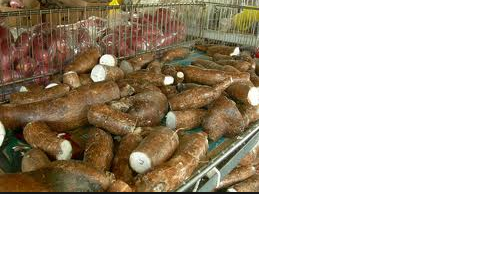Staple Food Diversification
All parties should be able to be the spearhead of the effort to diversify the consumption of basic foodstuffs. Staple food diversification in the meaning taht many foods can be the substitution for rice, as maize, cassava, sweet potatoes, taro, and now being widely studied the breadfruit.
While tubers has long been known by the people its rale to supplement the rice, and this sometimes can be completely the substitute of rice. Diversified of staple food in local scale will be the starting point to anticipate the global food crisis.
Dependence on rice consumption could a boomerang, because the increasing demand for basic foodstuffs without providing sufficient production.
Imports of rice had to be stopped or minimized, this can be praticed by shifting consumption to non-rice. There are enough food-producing carbohydrates as tubers, othere cereals, sago, and other.. Ironically, the way thinking of community perceives these foods tend to be less appreciated.
During this time, food from tubers limited to only complement the rice. "Indonesia's land area of 13 million hectares, will be very less to meet the needs of domestic rice. We still rely on Thailand which only has 13.5 million hectares,
The Urgent diversification has been motivated with the rapid growth of the world population is predicted to reach nine billion people in 2045. At that level, the need for food will increase to 70 percent.
Meanwhile, the natural conditions are less supportive of potential food productivity. In the diversification program, miscellaneous food origin tubers increasingly packaged nicely in order to encourage public taste to various staple food consumption.
One of them “rice pearl”, which is a combination of corn and cassava were packed like rice. We realize that creating new paddy field is very difficult. Consequently, the variety of food is needed,
We must immediately expand the planting area for a number of commodities without reducing the quantity of certain types of food.
We must be able to ensure the region is able to provide a wide variety of non-rice food needs. The purpose of this program is to develop the cultivation of food-based ingredients for food diversification.
We have to be optimistic pioneering local food diversification program was initiated by Agriculture office service or minstry. Therefore, we have abundant food availability and can be sufficient for the needs of the local community
Data stated, a number of food commodities in the province had a surplus. For example, as many as 2.6 million tonnes of maize from production of 2,767,883 tons. Cassava plants reached 3,271,193 tons with a surplus of 2.9 million tons.
The program began in earnest through the motions of active groups in the area of training regarding alternative materials as a substitute staple food..
...
All parties should be able to be the spearhead of the effort to diversify the consumption of basic foodstuffs. Staple food diversification in the meaning taht many foods can be the substitution for rice, as maize, cassava, sweet potatoes, taro, and now being widely studied the breadfruit.
While tubers has long been known by the people its rale to supplement the rice, and this sometimes can be completely the substitute of rice. Diversified of staple food in local scale will be the starting point to anticipate the global food crisis.
Dependence on rice consumption could a boomerang, because the increasing demand for basic foodstuffs without providing sufficient production.
Imports of rice had to be stopped or minimized, this can be praticed by shifting consumption to non-rice. There are enough food-producing carbohydrates as tubers, othere cereals, sago, and other.. Ironically, the way thinking of community perceives these foods tend to be less appreciated.
During this time, food from tubers limited to only complement the rice. "Indonesia's land area of 13 million hectares, will be very less to meet the needs of domestic rice. We still rely on Thailand which only has 13.5 million hectares,
The Urgent diversification has been motivated with the rapid growth of the world population is predicted to reach nine billion people in 2045. At that level, the need for food will increase to 70 percent.
Meanwhile, the natural conditions are less supportive of potential food productivity. In the diversification program, miscellaneous food origin tubers increasingly packaged nicely in order to encourage public taste to various staple food consumption.
One of them “rice pearl”, which is a combination of corn and cassava were packed like rice. We realize that creating new paddy field is very difficult. Consequently, the variety of food is needed,
We must immediately expand the planting area for a number of commodities without reducing the quantity of certain types of food.
We must be able to ensure the region is able to provide a wide variety of non-rice food needs. The purpose of this program is to develop the cultivation of food-based ingredients for food diversification.
We have to be optimistic pioneering local food diversification program was initiated by Agriculture office service or minstry. Therefore, we have abundant food availability and can be sufficient for the needs of the local community
Data stated, a number of food commodities in the province had a surplus. For example, as many as 2.6 million tonnes of maize from production of 2,767,883 tons. Cassava plants reached 3,271,193 tons with a surplus of 2.9 million tons.
The program began in earnest through the motions of active groups in the area of training regarding alternative materials as a substitute staple food..
...

0 komentar:
Post a Comment